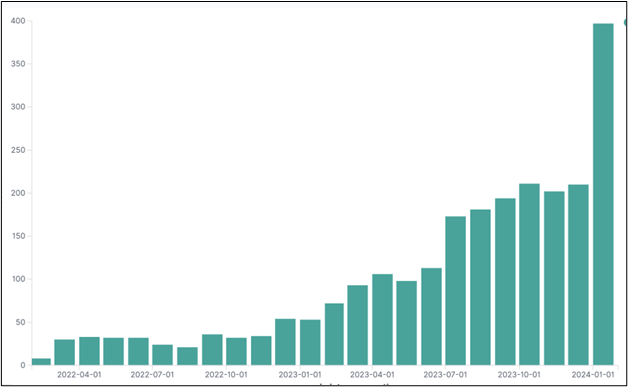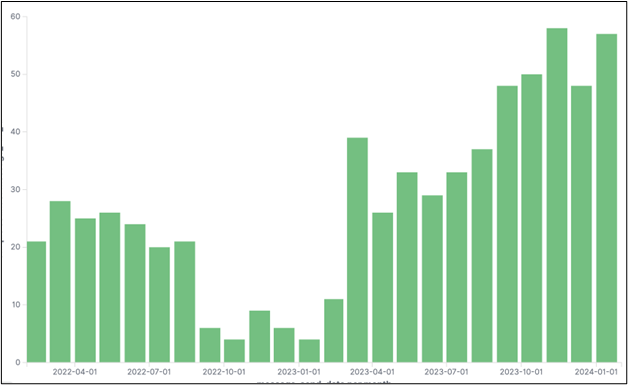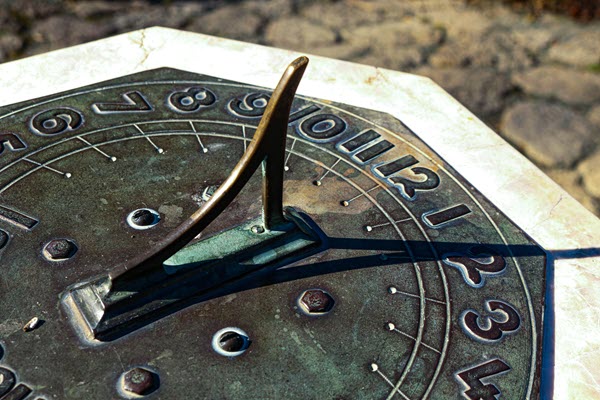Beyond the First Click: Exploring the Long Tail of Newsletter Engagement
Recently, I upgraded our newsletter software to introduce a new image-handling service, changing the domain for all image links in our newsletters. Why, you might ask? To give us more control of image rendering in the emerging world of AI. But that’s a topic for another day.
But First, A Little History
I’ve been a software engineer for 30 years. Early on in the web days (1998 or so) an article was published by W3 – the World Wide Web Consortium that is responsible for web standards. The title of that article1: “Cool URIs don’t change.” The premise of that article is to design systems and web resources so that URLs can continue to work indefinitely. No one likes to discover that a page they bookmarked a long time ago is no longer there! So, design your tools to avoid that problem.
That message resonated with me and has stuck with me throughout my software career.
Except when I forget.
Fast Forward
When we began the process of converting our image handling software, I realized we had made a fundamental mistake in the early development of our newsletters. We were utilizing a 3rd party system to provide CDN services for our images, and we used their domain in the image links in the newsletters. Our image provider is a large enough and stable enough company that I was not (and am not) worried about the domain going away. And we have full control over the image paths, so I can ensure that the images will always remain accessible in the expected location. So these URLs will work “forever,” right?
But the URLs in all of our images point to their domain, not a domain I control. And one of our reasons for this upgrade is to eliminate that 3rd party dependency. Can you see the problem? I can’t keep my old image URLs working without keeping the 3rd party service active.
So I have 2 options:
- Ensure the URLs continue to work, which requires keeping the 3rd party service active, or
- Break the URLs that live in inboxes around the world by retiring the 3rd party service.
Oh, how I wish I had introduced a CNAME alias to the 3rd party system way back when. But I didn’t. So now I have this problem.
Data Exploration
Surely, I thought, this URL problem would have a very short shelf life. Given a month or two after the conversion, the image loads would trickle to nothing. So we can wait a month or 2 and then shut off the service. Who reads old newsletters, anyway?
It turns out that a lot of people do. For one 24-hour period in July 2024, we saw over 2500 open events for newsletters between 6 and 30 months old.

Lo and behold - a Long Tail of newsletter activity. The long tail represents activity that occurs long after the initial event. We all know that most email activity happens very soon after delivery of the newsletter. Oftentimes, we generate our reports on the effectiveness of a campaign after 24 hours, or 7 days. Kath Pay recently penned an article on this very topic: the value of considering these “long tail” activities when evaluating the effectiveness of your email campaign.
And just as Kath described, I found that this long tail of email engagement generated actions - people really were clicking these older newsletters!

And not only are readers clicking, they have a higher click rate than the early readers. In fact, as emails get older, the click rate continues to increase! My theory is that when people are accessing old emails, they are looking for something specific in them - and when they find the email they are looking for, they are more likely to follow the links within it.
(Side note: yes, we have done our best to identify and exclude any bot-generated data from these reports).
People interact with these newsletters long after they have been sent. And this is happening each and every day. These numbers show that the tail continues to decrease over time, but not nearly as fast as I expected.
What does this mean?
Specifically, we have decided to continue with supporting the 3rd party image service to ensure these old image URLs continue to work. These readers are continuing to engage with newsletters, and I want them to have a good experience. Talk to me in another year and I’ll see what I think then.
But more generally, and perhaps more importantly, this showcases the durability of email as a medium. We have long believed in the power of email over other forms of online communications (texts in particular) due in part to the overall longevity of email inboxes. Outlook, Gmail, and others have done wonders in giving consumers vast amounts of storage space with fantastic searching capabilities. This makes it easier for our readers to find what they are looking for. Maybe they don’t remember a specific article in your newsletter (or maybe they do). Or maybe when they search for “Artificial Intelligence” in their inbox, your newsletter announcing ChatGPT 3.5 in November of 2022 shows up.
And for me, personally? I learned (yet again) that Cool URIs Shouldn’t Change. Now, hopefully, I remember this the next time.

Photo by Mark Vihtelic on Unsplash

 How to resolve AdBlock issue?
How to resolve AdBlock issue? 
